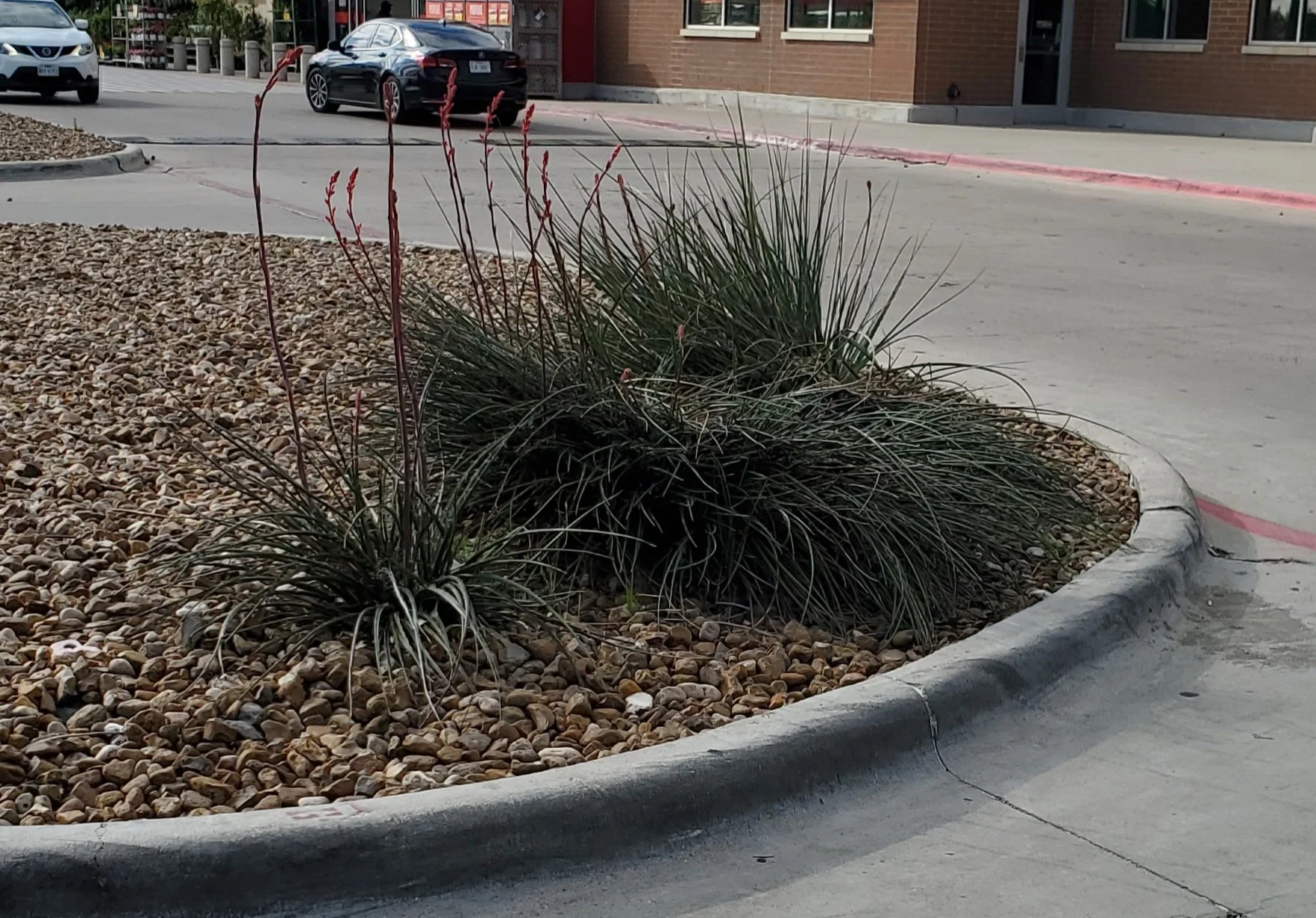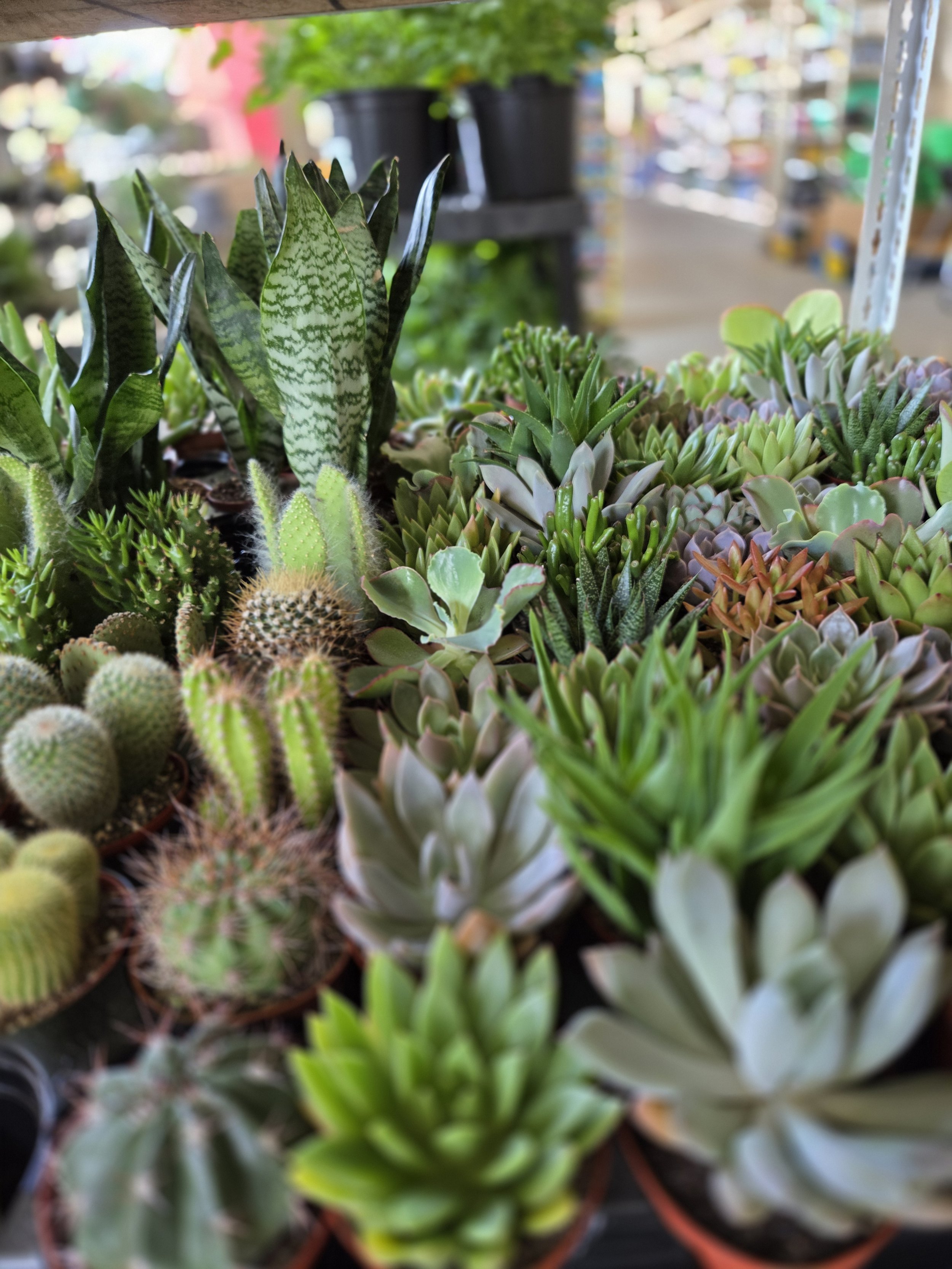Spines that Shine
Succulents and cacti aren’t just eye-catching - they’re ecological powerhouses built for Texas. (While a cruddy picture, the red yucca to the left has survived 10 years in a parking lot with no irrigation.)
So, whether you are tucking a red yucca into a dry border or styling upcycled containers with rosettes, these plants are resilient and gorgeous with a larg side of biodiversity.
🌟 Best Succulents for Central Texas Gardens
These three native example succulents are more than just drought-tolerant—they’re architectural, ecologically valuable, and perfect for sustainable landscapes.
🌺 Red Yucca (Hesperaloe parviflora)**
Why It Shines: Not a true yucca, but a succulent with arching, grass-like leaves and tall flower spikes that attract hummingbirds from spring through fall.
Care Tips:
Thrives in full sun and sandy, well-drained soil
Water weekly during establishment, then sparingly
Excellent for containers or xeriscaped borders
Design Notes: Use in mass plantings or as a focal point—its coral-red blooms add movement and color.
🌿 Buckley’s Yucca (Yucca constricta)
Why It Shines: A true Texas native with narrow, blue-green leaves and creamy white flower spikes. Tough, slow-growing, and deeply drought-resistant.
Care Tips:
Requires full sun and gritty, well-drained soil
Water every 10–14 days; avoid soggy conditions
Propagates by offsets and seed; minimal fertilizer needed
Design Notes: Ideal for rocky slopes, native plant beds, or wildlife gardens—supports pollinators and adds vertical interest.
👟 Devil’s Shoestring (Nolina lindheimeriana)**
Why It Shines: Also known as Lindheimer’s Bear Grass, this native perennial has long, strap-like leaves and dramatic flower spikes. It’s low-maintenance and ecologically important. Around the Austin area, you are going to hear it called Devil’s Shoestring, not the Lindheimer’s Bear Grass.
Care Tips:
Prefers full sun to partial shade
Water weekly during establishment, then drought-tolerant
Avoid overwatering—root rot is a risk
Design Notes: Great for woodland edges, prairie gardens, or container displays. Its form adds texture and movement, and it’s safe for pets. However, keep it away from walking paths. That ‘shoestring’ can easily tangle legs, walkers, and strollers, causing trips and falls.
🏡 From Wild Landscapes to Windowsills: Succulents for Indoor Spaces
While Central Texas natives like Red Yucca and Buckley’s Yucca anchor our outdoor gardens with bold structure and resilience, there's another side to succulent life—tiny, charming houseplants that thrive in bright, indirect light. These indoor varieties bring the desert’s quiet magic into our homes, often nestled in 4" pots on windowsills or shelves.
Whether you're a seasoned gardener or just starting out, these petite succulents offer low-maintenance beauty and a chance to connect with nature year-round,
These little cuties are ideal for south-or west-facing windows with filtered light. They prefer 4-6 hours of brightness daily, but not that harsh direct Texas sun which can scorch their leaves to a crisp.
Whether you're working with rocky soil under the Texas sun or a sunny windowsill in a cozy apartment, there's a succulent that fits your space and your rhythm. These resilient beauties offer texture, color, and a quiet kind of joy. Succulents don’t just survive—they thrive in the margins, reminding us that with the right light and a little care, growth is always possible.


